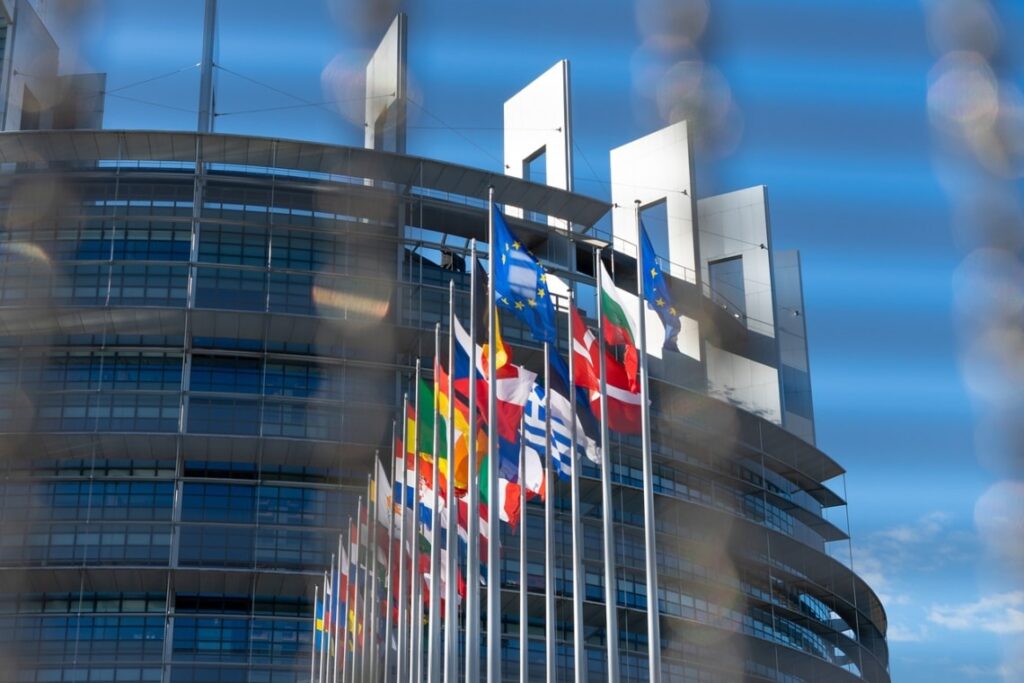The regulation of crypto-assets: comparing the United States and the European Union
3 min read
The emergence of crypto-assets and blockchain technology has posed new challenges for regulators. As the global crypto-asset market continues to expand, authorities struggle to identify a uniform model for regulating the sector.
The United States and the European Union are taking different paths in regulating crypto-assets, adopting approaches that have strengths and weaknesses in each case.
The US approach: balancing innovation and investor protection
In the United States, regulatory efforts have focused on finding a delicate balance between promoting innovation and protecting investors, in an environment characterized by a complex regulatory framework consisting of federal and state regulations.
The Securities and Exchange Commission (SEC)-the federal financial markets regulator-has been at the forefront of overseeing the emergence of the phenomenon, with the goal of providing clarity on the classification of assets classifiable as financial instruments (securities). Through the adoption of a series of enforcement actions and guidelines, the SEC sought to prevent fraudulent initial coin offerings and ensure that market participants acted in accordance with applicable securities offering laws.
In parallel, the Financial Crimes Enforcement Network – a government agency with expertise in anti-money laundering – has required crypto operators to comply with anti-money laundering regulations, with the goal of curbing illicit activities.
However, the regulatory landscape remains fragmented, with different government agencies and states retaining their own jurisdiction in regulating certain aspects of the phenomenon. This decentralized and disorganized approach has resulted in numerous uncertainties due to the lack of consistent regulations, hindering market development and slowing innovation in the United States.
Exemplary in this regard is the affair related to the continuous delays and obstacles in the approval of the first ETF (passive replication investment fund) with underlying Bitcoin.
Add to this the uneven stances of US regulators and US jurisprudence – not least with the Ripple and Grayscale cases – that have certainly not helped offer certainty to industry players.
The regulatory approach: building an organic regulatory framework
Unlike the United States, the European Union has taken a more harmonious approach to crypto-asset regulation, notably through the adoption of the MiCAR Regulation. MiCAR was adopted with the aim of comprehensively and uniformly regulating the issuance, trading, and custody of crypto-assets for all EU member states. The regulation aims to improve investor protection, foster market integrity and promote innovation while maintaining financial stability.
At the same time, the European Union-already with the Fourth and Fifth AML Directives, as well as, later, with the Transfer of Funds Regulation – has included crypto-assets in the scope of AML regulation, sometimes imposing organizational and implementation challenges for market participants. The European Union’s measures primarily require exchanges and crypto wallet providers to adhere to strict AML requirements, as well as to implement the so-called travel rule, which essentially mandates the traceability of financial movements made via crypto-assets as well.
The adoption of a harmonized approach makes it possible to create legal certainty, promote cross-border activities and encourage investment in the crypto-asset market; at the same time, however, the adoption of stringent requirements leads to increased compliance costs and a possible restriction, as a result, of competition in the market (eliminating operators that are not sufficiently structured to comply with the new regulatory requirements).
Challenges and prospects
Both the US and the EU face significant challenges in effectively regulating crypto-assets. The decentralized nature of cryptocurrencies makes it difficult for any single jurisdiction to fully control the market. In the US, the lack of centralized regulation has led to inconsistent approaches and gaps in legal certainty, but without imposing particularly stringent constraints on operators. On the other hand, the organic regulatory framework adopted by the European Union seems much more promising, but the pace of implementation and potential obstacles in achieving full harmonization among member states in the implementation phases still pose challenges.
Related posts
More from author
Source link
#regulation #cryptoassets #comparing #United #States #European #Union







